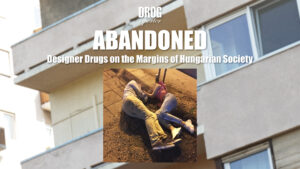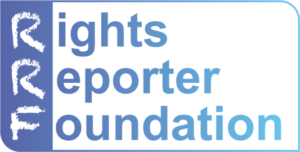How the Polish Ministry of Health wants to fight new psychoactive substances. Analogy with the myth of the Hydra and Heracles.
22:30, 27.11.2017, Monday, Warsaw. Designer drugs have never before been as cheap and as accessible as they are today. I browse the internet searching for ‘designer drugs Warsaw’. I choose the first link and call. The taxi arrives 30 minutes later. I pay 80zł (around €20) in total: 60zł for a vial, which is meant to contain 4cmc (otherwise known as Clephedrone) and 20zł for the delivery. In an online store, one can buy a gram for as little as 20zł, so as you can see I just paid 300% more.
The Polish authorities are not handling designer drugs well. The lifetime use of new psychoactive substances is currently at 10% for teenagers between the ages of 15 and 16 years old according to a report by EMCDDA (European Monitoring Centre for Drugs and Drug Addiction). It is the highest rate of all European countries, alongside Estonia that is facing the same problem. The average in Europe is 4%. Poland is an undisputed leader in the use of substances it knows next to nothing about. The Main Sanitary Inspectorate has stated that every month they record approximately 300 cases of intoxication by these substances, with over a dozen deaths each year. The pattern is endless. Substances are prohibited, new ones appear in their place, and it goes on like a vicious circle. Although one thing is changing. The new substances that appear on the market are drastically worse. Therapists are having trouble handling the amount of people using or addicted to these new harmful psychoactive substances. Users have noted the increase of unpleasant side effects such as psychosis. Why are we so powerless? It’s simple – we’re wandering in the dark. How are we supposed to solve the problem when we don’t know its source?
Two weeks ago our Ministry of Health came up with a ‘new’ idea. They are beginning a new battle in the War on Drugs. They have drafted an amendment of the Act on Counteracting Drug Addiction that contains a series of regulations aimed at limiting the production and trade of new psychoactive substances and other similar substances. They also introduce punishments for possession. Of course, as stated in the explanatory statement, the amendment is not meant to target consumers. Yet a question arises – are their intentions true, or are they completely unaware of the reality? Most cases of possession concern users after all. For years now, we have emphasised that users should not be penalised. Unfortunately, we have not been heard. Therefore, it seems redundant and futile to repeat those arguments with respect to these new psychoactive substances.
At times it is best to visualise a problem, rather than to try to explain it. The myth of the Lernaean Hydra will serve as a good example. Heracles was meant to slay the Hydra, a multi-headed serpentine monster, as the second of his Twelve Labours. The undefeated hero faced quite a challenge, for every head he chopped off, the Hydra would regrow two or more in its place. He then understood he must take on a new approach, and asked his nephew Iolaus for help. Seeing that Heracles was being overwhelmed by the multi-headed monster, Iolaus cauterised each neck as Heracles beheaded it. Finally Heracles cut off Hydra’s final, immortal head and placed it – still alive and writhing—under a great rock. The War on Drugs, which Poland is a part of, is still chopping off heads, and hasn’t come to any conclusions yet. This course of action is not only ineffective but actually counterproductive and harmful. The new legislation is meant to be a remedy for the situation in Poland in regards to drug use and new psychoactive substances. It should, however, be pointed out that we have prohibited substance production, circulation, and possession for nearly 20 years now. Has criminal law influenced demand? Certainly not. Here the myth is different than our reality – we can’t just hide this problem under a great rock – a world without stimulants doesn’t exist. Maybe the question we should be asking ourselves is why people turn to these substances?
We can also learn from our mistakes, examine the available expertise, and fight the Hydra with the most effective methods. The answer lays within the same Bill, which states in Article 2 that drug prevention is implemented through the formulation of social, economic, educational, and health policies, in particular with regards to: 1) Education, counselling, communication, and prevention. 2) Treatment, rehabilitation, and reintegration of drug addicts. 3) Social and health harm reduction. 4) Monitoring substances, which can lead to substance dependence. 5) Combating illegal trade, production, manufacture, conversion, and possession of substances, whose intake could lead to substance dependence. Criminal law is situated in fifth place. It is not first for a reason – only thoughtful education can affect the awareness and behaviour of society. Therefore if we don’t want to have the same discussion in five years, we must change. Although it may seem difficult, we should address the decriminalisation of traditional psychoactive substances, those known to us for years now, that pose less risk to public health. We must develop a more constructive approach to drug policy with the emphasis on prevention, education, and treatment for addiction rather than criminal sanctions. Education first; the law is always a few steps behind reality.
Adam Stasiak – lawyer, works in the Polish Drug Policy Network where he also acts in the Volunteer Centre aiding imprisoned drug user people.





